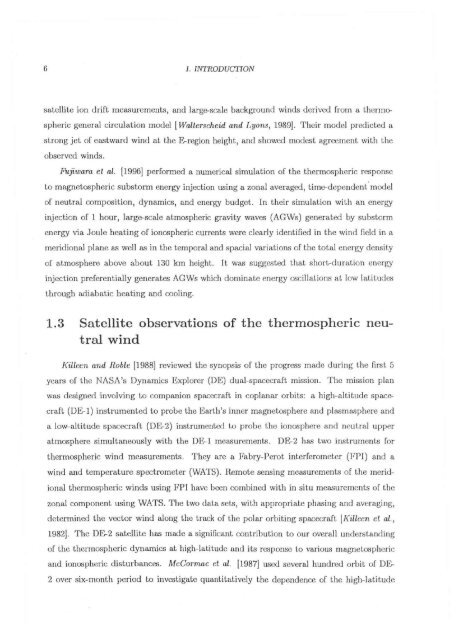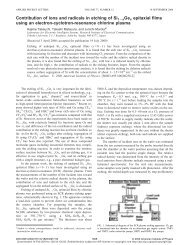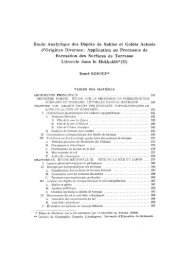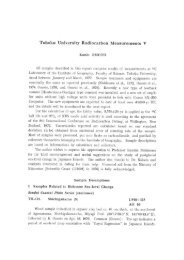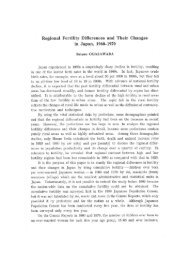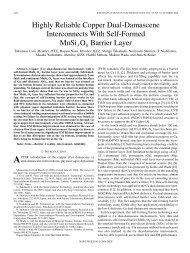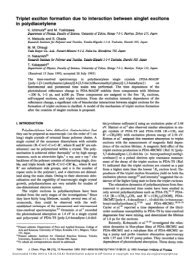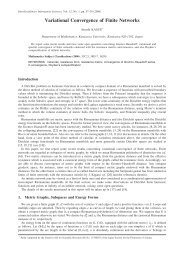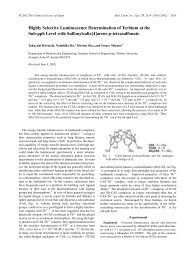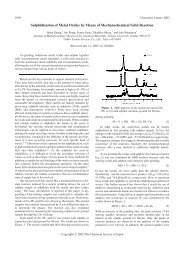MgE71241:1attf:3(t At-- 0 -3 5t5M I:. N1144±TitoD riziMinliJ VAT .9f 1 ...
MgE71241:1attf:3(t At-- 0 -3 5t5M I:. N1144±TitoD riziMinliJ VAT .9f 1 ...
MgE71241:1attf:3(t At-- 0 -3 5t5M I:. N1144±TitoD riziMinliJ VAT .9f 1 ...
Create successful ePaper yourself
Turn your PDF publications into a flip-book with our unique Google optimized e-Paper software.
6 1. INTRODUCTION<br />
satellite ion drift measurements, and large-scale background winds derived from a thermo-<br />
spheric general circulation model [Walterscheid and Lyons, 1989]. Their model predicted a<br />
strong jet of eastward wind at the E-region height, and showed modest agreement with the<br />
observed winds.<br />
Fujiwara et al. [1996] performed a numerical simulation of the thermospheric response<br />
to magnetospheric substorm energy injection using a zonal averaged, time-dependent model<br />
of neutral composition, dynamics, and energy budget. In their simulation with an energy<br />
injection of 1 hour, large-scale atmospheric gravity waves (AGWs) generated by substorm<br />
energy via Joule heating of ionospheric currents were clearly identified in the wind field in a<br />
meridional plane as well as in the temporal and spacial variations of the total energy density<br />
of atmosphere above about 130 km height. It was suggested that short-duration energy<br />
injection preferentially generates AGWs which dominate energy oscillations at low latitudes<br />
through adiabatic heating and cooling.<br />
1.3 Satellite observations of the thermospheric neu-<br />
tral wind<br />
Killeen and Roble [1988] reviewed the synopsis of the progress made during the first 5<br />
years of the NASA's Dynamics Explorer (DE) dual-spacecraft mission. The mission plan<br />
was designed involving to companion spacecraft in coplanar orbits: a high-altitude space-<br />
craft (DE-1) instrumented to probe the Earth's inner magnetosphere and plasrnasphere and<br />
a low-altitude spacecraft (DE-2) instrumented to probe the ionosphere and neutral upper<br />
atmosphere simultaneously with the DE-1 measurements. DE-2 has two instruments for<br />
thermospheric wind measurements. They are a Fabry-Perot interferometer (FPI) and a<br />
wind and temperature spectrometer (WATS). Remote sensing measurements of the merid-<br />
ional thermospheric winds using FPI have been combined with in situ measurements of the<br />
zonal component using WATS. The two data sets, with appropriate phasing and averaging,<br />
determined the vector wind along the track of the polar orbiting spacecraft [Killeen et al.,<br />
1982]. The DE-2 satellite has made a significant contribution to our overall understanding<br />
of the thermospheric dynamics at high-latitude and its response to various magnetospheric<br />
and ionospheric disturbances. McComae et al. [1987] used several hundred orbit of DE-<br />
2 over six-month period to investigate quantitatively the dependence of the high-latitude


